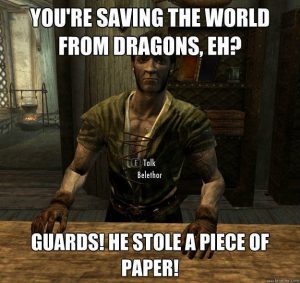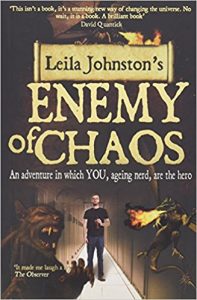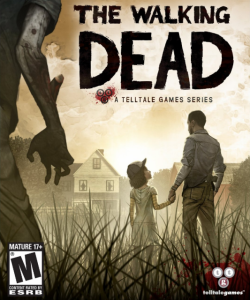A) Choose one of the indie designers / developers and outline why there work and approach is of interest to you.
Garry Newman, the founder, the main overseer and a programmer for the company ‘FacePunch Studios’. Garry created the widely known company ‘FacePunch Studios’ in 2004 on his own, however over the years the company has expanded to hold 43 employees in total. The company is notorious for producing games such as ‘Garry’s Mod’ and ‘rust’ as well as a few other lesser known titles. Rust which has been developed since 2012, for instance was announced to have made the company $30,000,000 by 2014, only in 2 years, according to Garry Newman over Twitter, which had surpassed Garry’s Mod, which had been in development since 2004 ( Emanuel Maiberg, 2014) . Rust is the most successful game developed by Garry and his team, and here’s why:

(Source: https://www.myblackboxhosting.com/wp-content/uploads/2017/01/rust-1.png)
If we take ‘Rust’ as an example, their approach to game design is open. By this, i am referring to their interactions with their fanbase and community. The developers post weekly Dev Blog Updates, look at concept art created by fans (as well as producing their own) , and host Q&A sessions to try and get as much feedback from the audience as possible. This in my opinion has made the game incredibly successful as it has the influence of its players and additionally it keeps gamers informed, which keeps the fanbase interested in the game. The same techniques have been used for other games produced by the company, where so blogs are available to inform the fanbases.

(source: https://i.ytimg.com/vi/C5GYZoTGEUg/maxresdefault.jpg)
Additionally i could mention how the games themselves are competitive (in ‘Rust’s case) or imaginative and creative (such as with Garry’s Mod) which spurs people to carry on playing. However despite the games themselves, i believe that the constant updates the games get and the studios interaction with players, as well as “letting players test new features before they’re added to the main game” (Alex Wawro, 2014), is what truly makes the games they produce and their approach so significantly unique, interesting and successful.
(321 Words)
B) What do you think could be the most exciting indie projects that are in development

(Source: http://www.craveonline.com/assets/uploads/2017/06/The-Last-Night-Controversy-Tim-Soret.jpg)
In my opinion, one of the most exciting indie projects in development is ‘The Last Night’ which is being developed by Odd Tales. The game is a cinematic platformer set in a cyberpunk themed world. To me, what makes the game interesting is the that the developers have “combined both 2D and 3D techniques” (IcyEyes, 2017) , which in this case formed the foundation for a “2.5D cyberpunk sidescroller” (Tom Marks, 2017). 2.5D in games means that the layout in the game is similar to that of traditional 2D games, with the addition of 3D elements such as layering. For instance within The Last Night the trailer shows the player moving along a 2D axis but objects and people around the protagonist move within the background and foreground giving the perception of a 3D game.

(Source: http://oddtales.net/img/TheLastNight_04.jpg)
Additionally, the games mood lighting and cinematic effects add to the overall aesthetic and environment to the game, which looks promising in my opinion. The Trailer released this year, showing off in game footage, suggest the game should hopefully be driven more dominantly through an interesting and dynamic story, within an advanced, futuristic, cyberpunk landscape. Therefore for both the reasons of: lighting, story, and the fact its a 2.5D platformer, i personally am exited to see the completion of this indie project.
(213 Words)
References:
https://wwww.facepunch.com/#team
https://gmod.facepunch.com/blog/
https://rust.facepunch.com
https://rust.facepunch.com/blog/devblog-186/https://garry.tv
http://oddtales.net
Bibliography
Emanuel Maiberg, (2014),Rust already made more than Garry’s Mod’s $30 million. [Online] Available from: https://www.gamespot.com/articles/rust-already-made-more-than-garry-s-mod-s-30-million/1100-6417907/ [Accessed 21 November]
Alex Wawro, (2014) The developers who made Rust are rebuilding it from scratch. [Online] Available from: https://www.gamasutra.com/view/news/219776/The_developers_who_made_Rust_are_rebuilding_it_from_scratch.php [Accessed 21 November]IcyEyes, (2017) 2.5D. [Online] Available from: https://www.giantbomb.com/25d/3015-660/ [Accessed 21 November]
Tom Marks, (2017) Take a first look at gameplay from cyberpunk sidescroller The Last Night. [Online] Available from: http://www.pcgamer.com/take-a-first-look-at-gameplay-from-cyberpunk-sidescroller-the-last-night/ [Accessed 21 November]
Nathan Grayson, (2017) Rust Designer Explains The Game’s $5.7 Million In Refunds. [Online] Available from: https://www.kotaku.com.au/2017/06/rust-designer-explains-the-games-5-7-million-in-refunds/ [Accessed 21 November]













